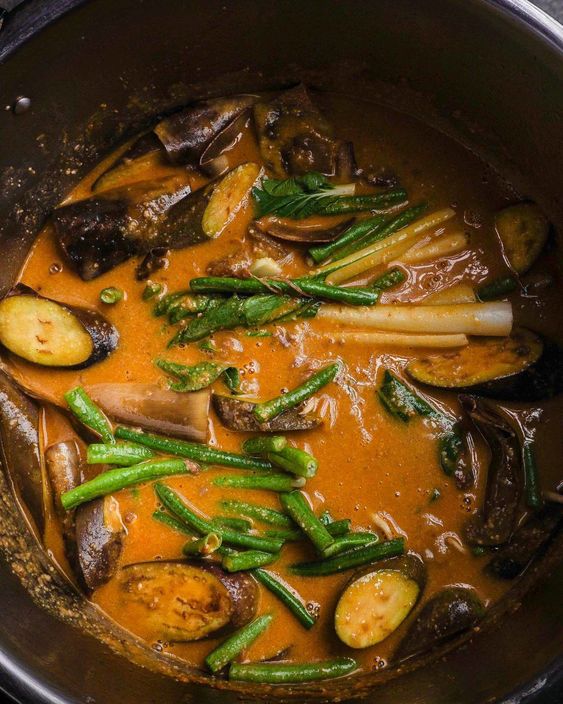Appreciate Typical Filipino Flavors With Easy-To-Follow Recipes
Checking out typical Filipino cuisine uses a distinct opportunity to engage with an abundant tapestry of tastes and cultural stories. As we explore these cooking practices, one may ask yourself how to finest bring the warmth of Filipino hospitality to their own dining table.

Summary of Filipino Food
Discovering the vivid tapestry of Filipino cuisine reveals an abundant social heritage affected by numerous historic and geographical aspects. The Philippines, an archipelago of over 7,000 islands, flaunts a varied selection of tastes and cooking methods. The nation's cooking landscape is formed by indigenous practices and the influences of emigration, trade, and migration. As a result, Filipino cuisine is an one-of-a-kind mix of Malay, Spanish, Chinese, and American components.
Rice functions as the keystone of Filipino dishes, typically gone along with by an array of vegetables, meats, and seafood. The use of strong tastes is a hallmark of the cuisine, with active ingredients such as garlic, onions, ginger, and soy sauce playing crucial roles. The emphasis on public dining reflects the Filipino society of friendliness and household ties.
Street food also plays a considerable role in the culinary scene, showcasing regional active ingredients and creative food preparation techniques. As the Philippines remains to welcome globalization, the blend of traditional and modern-day impacts can be seen in modern Filipino dishes, additionally enhancing its culinary identification. Filipino food recipes. Overall, Filipino food is a testimony to the country's background, society, and dynamic spirit
Must-Try Standard Recipes
Filipino food is finest experienced via its standard meals, each using an one-of-a-kind insight into the nation's varied culinary heritage. Among the must-try dishes is Adobo, a savory stew usually made with poultry or pork, seasoned in vinegar, soy sauce, and garlic before being slow-cooked to excellence. Its abundant and zesty taste account represents the heart of Filipino home cooking.
Another iconic recipe is Sinigang, a sour soup often prepared with tamarind, tomatoes, and different veggies. This dish can feature pork, shrimp, or fish, and is cherished for its refreshing preference and warming up top qualities.
Lechon, an entire roasted pig, is a focal point at Filipino parties, recognized for its crunchy skin and tender meat. It embodies the festive spirit of Filipino events.
For those desire something pleasant, Halo-Halo is a delightful dessert combining crushed ice, sweetened fruits, jellies, and covered with leche flan and purple yam.
Each of these conventional meals encapsulates the significance of Filipino society, inviting anyone to appreciate the vivid flavors and rich history that specify the archipelago's cooking landscape.
Step-by-Step Recipes
Food preparation authentic Filipino recipes in your home can be an enhancing experience that brings the vibrant flavors of the Philippines into your kitchen. With a huge selection of traditional recipes to select from, utilizing detailed recipes permits both newbie and seasoned cooks to grasp the strategies and flavors essential to next Filipino food.
Begin by picking a recipe that intrigues you, such as adobo, sinigang, or lumpia. Each recipe usually includes a thorough component checklist adhered to by clear directions, leading you with the cooking procedure.
As you progress, pay attention to cooking methods one-of-a-kind to Filipino cuisine, such as sautéing (ginisa) or stewing (nilaga) These approaches can substantially boost the deepness of taste in your meals. Timing is important; comply with the suggested food preparation times to attain the excellent texture and preference.
Crucial Active Ingredients and Tips
Frequently, the secret to understanding Filipino cuisine lies in understanding and utilizing important active ingredients that specify its distinctive flavors. Central to several recipes are staples like soy sauce, vinegar, garlic, and ginger, which add to the distinct balance of mouthwatering, sour, and pleasant notes. Soy sauce functions as a base for marinades and sauces, while vinegar, particularly cane vinegar or coconut vinegar, imparts an appetizing brightness that is vital in meals like adobo.
Rice is an indispensable part of Filipino dishes, commonly offered along with main dishes to soak up tasty sauces. For a touch of authenticity, choose jasmine or long-grain rice. Furthermore, using fresh fruit and vegetables such as tomatoes, environment-friendly beans, and eggplants improves the meal's vibrancy and dietary worth.
Do not ignore the significance of herbs and seasonings, such as bay leaves, lemongrass, and chili peppers, which elevate the taste account. When food preparation, keep in mind that patience is vital-- enabling components to meld together causes richer tastes. Finally, welcome the method of tasting as you go; this will allow you to readjust flavorings and accomplish the excellent equilibrium that defines Filipino cuisine.
Offering and Delighting In Filipino Dishes
Understanding the subtleties of Filipino food extends beyond preparation and active ingredients; it encompasses the means dishes are offered and delighted in. The Filipino dining experience is defined by common sharing, advertising a feeling of togetherness and party. Typically, dishes exist in huge servings, allowing restaurants to partake in a selection of flavors.
Rice, a go to my site staple in Filipino dishes, is frequently acted as the structure upon which the various other dishes rest. Coming with viands, such as adobo, sinigang, or lechon, are put in the center of the table, inviting visitors to offer themselves. Filipino food recipes. This practice not only cultivates a loosened up ambience yet likewise motivates conversations and connections amongst diners

Final Thought
Finally, standard Filipino food supplies a rich tapestry of tastes and social importance, welcoming expedition through its varied recipes. The easy-to-follow recipes offered help with the prep work of famous dishes, cultivating a deeper admiration for the ingredients and techniques entailed. Highlighting public dining, these cooking practices reinforce family members connections and promote the heat of Filipino friendliness. Engaging with this lively food not only enriches the dining experience yet likewise maintains and commemorates the heritage of the Filipino individuals.